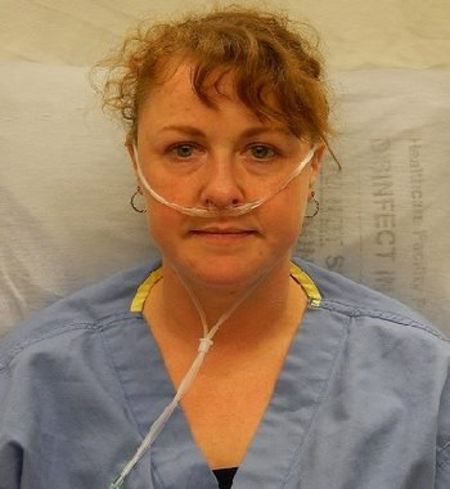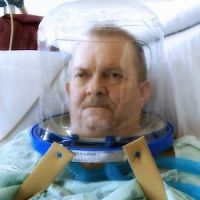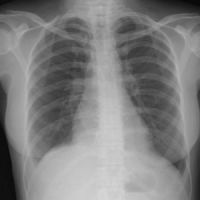A French research team says a relatively new method to provide supplemental oxygen to patients at risk of respiratory failure after surgery may be a viable alternative to a more commonly used technique. The finding has been presented at the American Thoracic Society 2015 International Conference and published online by JAMA.
After cardiothoracic surgery, acute respiratory failure is common and associated with an increased risk of illness and death. Noninvasive ventilation (NIV) is often used to correct hypoxemia or abnormally low level of oxygen in the blood. However, NVI is difficult to implement, requires substantial resources, and may cause patient discomfort.
The French study tested a newer method, high-flow nasal oxygen therapy, which is easier to use and better tolerated by patients. This method delivers oxygen through a nasal cannula, a device that consists of a tube that splits into two prongs placed in the nostrils.
The trial involved 830 patients who had undergone cardiothoracic surgery (such as coronary artery bypass grafting or heart valve repair) and developed acute respiratory failure or were deemed at risk for respiratory failure after extubation (removal of a breathing tube) due to pre-existing risk factors. Patients were randomly assigned to receive high-flow nasal oxygen therapy delivered continuously through a nasal cannula (flow, 50 L/min; n = 414) or bilevel positive airway pressure (BiPAP) delivered with a full-face mask for at least four hours per day (n = 416).
The primary outcome for the study conducted at six French intensive care units was treatment failure (defined as reintubation), switch to the other study treatment, or premature treatment discontinuation (patient request or adverse effects). The trial yielded these results:
"Among patients undergoing cardiothoracic surgery with or at risk for respiratory failure, the use of high-flow nasal oxygen compared with intermittent BiPAP did not result in a worse rate of treatment failure. The findings support the use of highflow nasal oxygen therapy in this patient population," Francois Stephan, MD, PhD, of the Centre Chirurgical Marie Lannelongue, Le Plessis Robinson, France, and co-authors write in the JAMA report.
In an accompanying editorial, Lorenzo Del Sorbo, MD, and Niall D. Ferguson, MD, MSc, of the University of Toronto, comment on the study's findings: "How should clinicians apply the results of the trial by Stephan et al. in clinical practice? The answer is, as usual, it depends.
"In centres with considerable expertise with noninvasive ventilation (NIV) and for patients who are hypercapnic [an excess of carbon dioxide in the blood], a reasonable approach would be to favour NIV in this setting. Alternatively, based on these data and others, for many postoperative patients high-flow nasal cannulae appear to be a viable alternative that is better tolerated and may lead to noninferior clinical outcomes."
Source: JAMA
Image credit: Wikimedia Commons
After cardiothoracic surgery, acute respiratory failure is common and associated with an increased risk of illness and death. Noninvasive ventilation (NIV) is often used to correct hypoxemia or abnormally low level of oxygen in the blood. However, NVI is difficult to implement, requires substantial resources, and may cause patient discomfort.
The French study tested a newer method, high-flow nasal oxygen therapy, which is easier to use and better tolerated by patients. This method delivers oxygen through a nasal cannula, a device that consists of a tube that splits into two prongs placed in the nostrils.
The trial involved 830 patients who had undergone cardiothoracic surgery (such as coronary artery bypass grafting or heart valve repair) and developed acute respiratory failure or were deemed at risk for respiratory failure after extubation (removal of a breathing tube) due to pre-existing risk factors. Patients were randomly assigned to receive high-flow nasal oxygen therapy delivered continuously through a nasal cannula (flow, 50 L/min; n = 414) or bilevel positive airway pressure (BiPAP) delivered with a full-face mask for at least four hours per day (n = 416).
The primary outcome for the study conducted at six French intensive care units was treatment failure (defined as reintubation), switch to the other study treatment, or premature treatment discontinuation (patient request or adverse effects). The trial yielded these results:
- With BiPAP, treatment failure occurred in 91 of 416 patients (21.9 percent) vs. 87 of 414 (21.0 percent) with high-flow nasal oxygen.
- No significant differences were found for intensive care unit mortality — 23 patients with BiPAP (5.5 percent) and 28 patients with high-flow nasal oxygen therapy (6.8 percent); or for any of the other secondary outcomes, including number of nurse interventions for unplanned device readjustment and respiratory complications.
- Dyspnoea (laboured breathing) and comfort scores during the first three days were similar in both groups.
"Among patients undergoing cardiothoracic surgery with or at risk for respiratory failure, the use of high-flow nasal oxygen compared with intermittent BiPAP did not result in a worse rate of treatment failure. The findings support the use of highflow nasal oxygen therapy in this patient population," Francois Stephan, MD, PhD, of the Centre Chirurgical Marie Lannelongue, Le Plessis Robinson, France, and co-authors write in the JAMA report.
In an accompanying editorial, Lorenzo Del Sorbo, MD, and Niall D. Ferguson, MD, MSc, of the University of Toronto, comment on the study's findings: "How should clinicians apply the results of the trial by Stephan et al. in clinical practice? The answer is, as usual, it depends.
"In centres with considerable expertise with noninvasive ventilation (NIV) and for patients who are hypercapnic [an excess of carbon dioxide in the blood], a reasonable approach would be to favour NIV in this setting. Alternatively, based on these data and others, for many postoperative patients high-flow nasal cannulae appear to be a viable alternative that is better tolerated and may lead to noninferior clinical outcomes."
Source: JAMA
Image credit: Wikimedia Commons
References:
Stéphan F et al. (2015) High-Flow Nasal Oxygen vs Noninvasive Positive Airway Pressure in Hypoxemic Patients After Cardiothoracic Surgery: A Randomized Clinical Trial. JAMA. Published online May 17, 2015. doi:10.1001/jama.2015.5213
Latest Articles
healthmanagement, oxygen therapy, NVI, noninvasive ventilation, respiratory failure, cardiothoracic surgery
A newer method to provide supplemental oxygen to patients at risk of respiratory failure after surgery may be a viable alternative to a more commonly used technique.



























